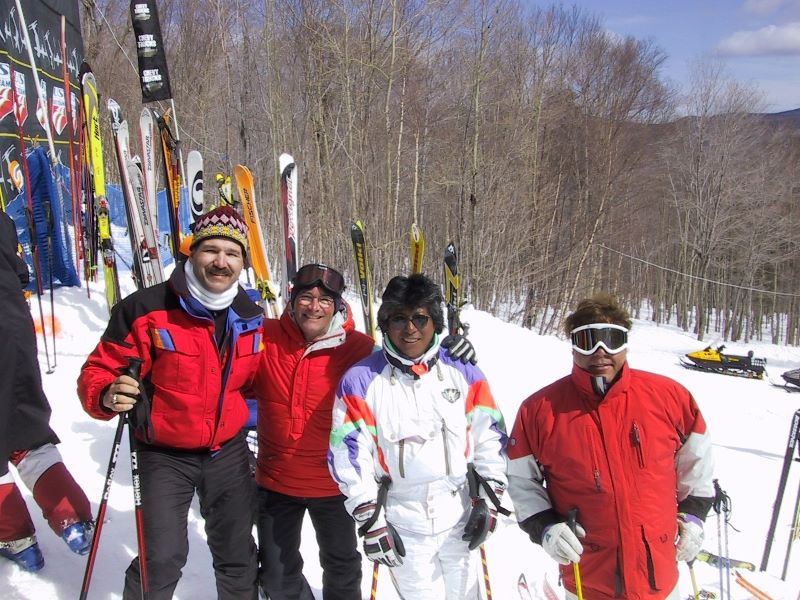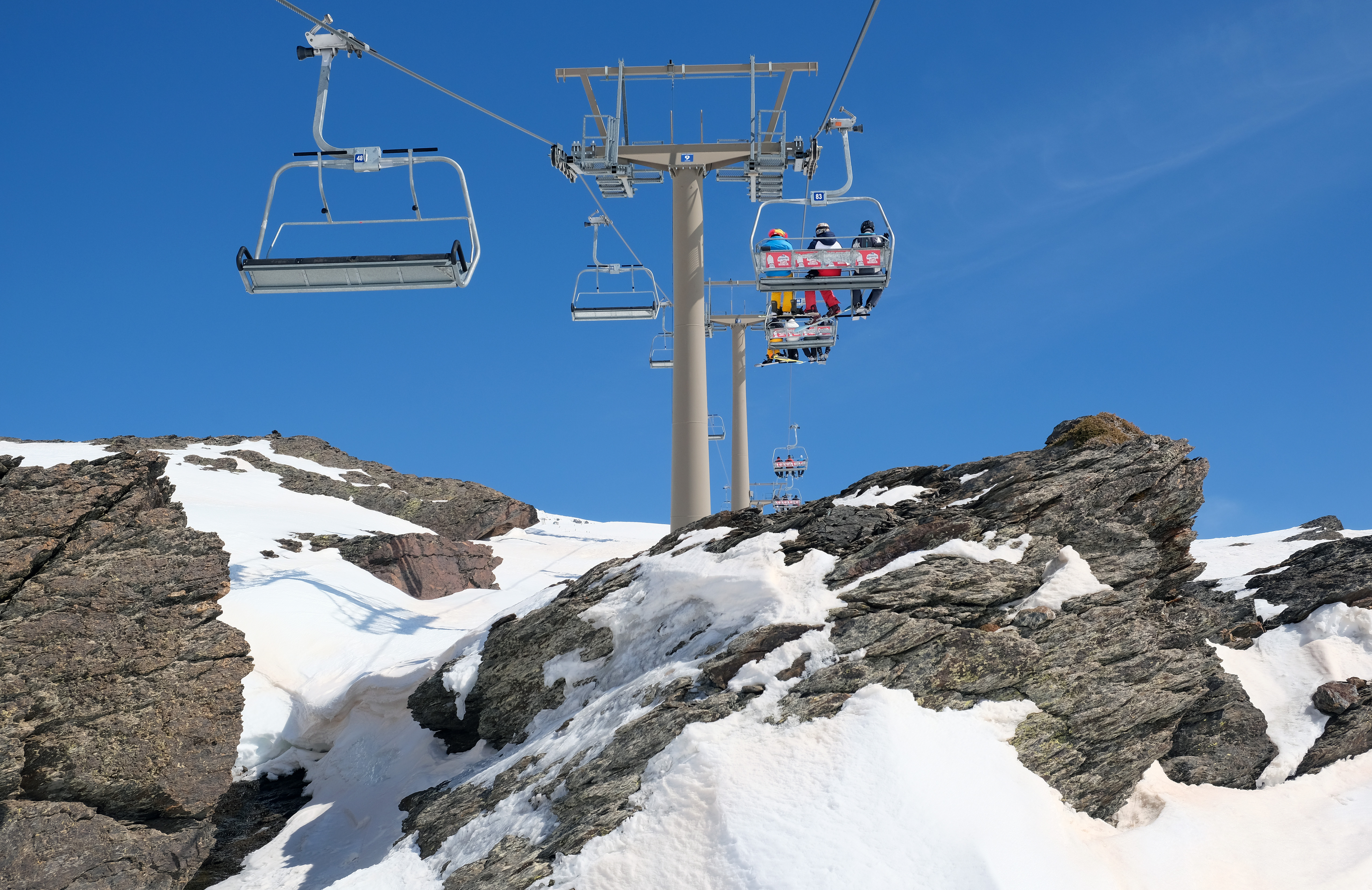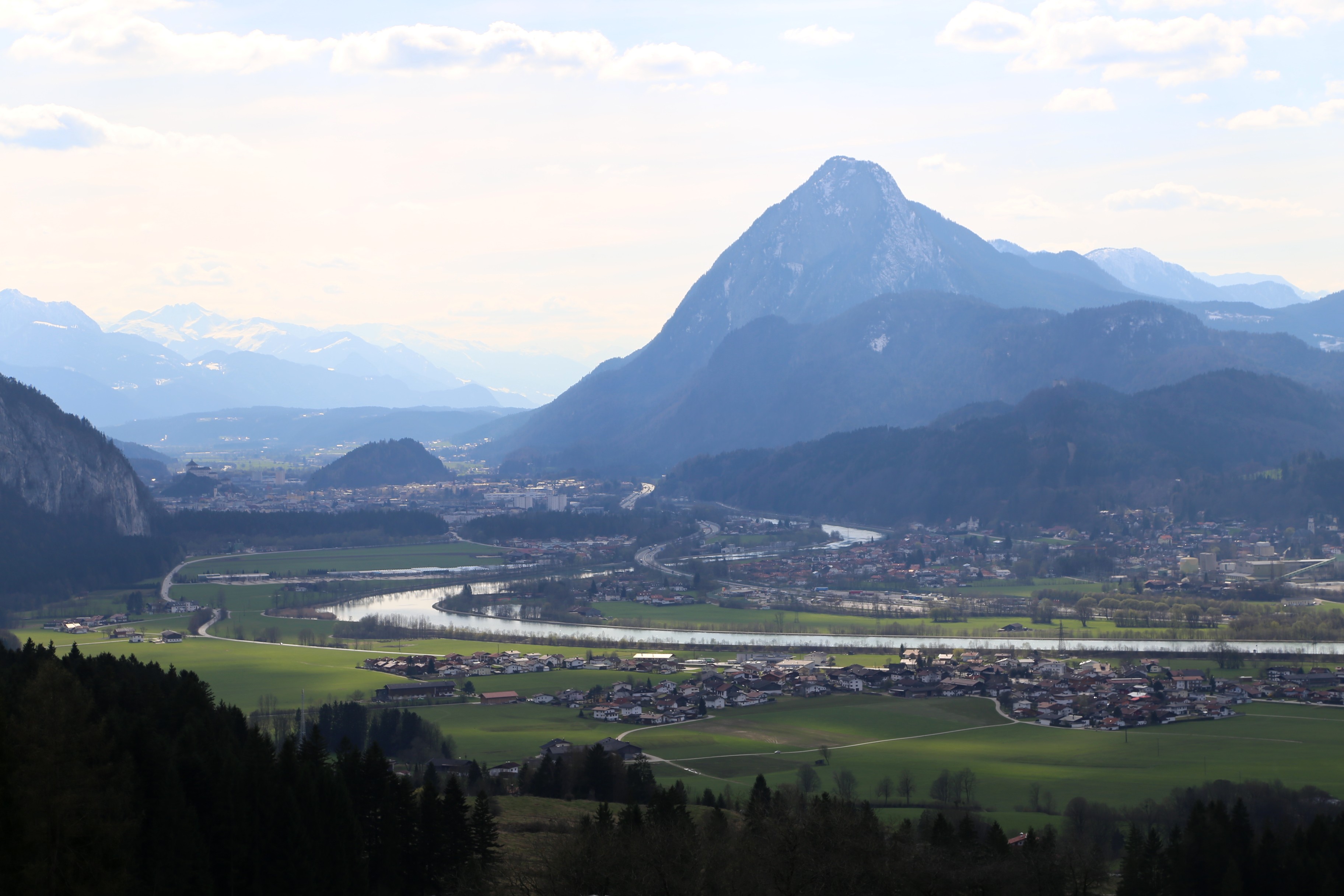|
Pec Pod Sněžkou
Pec pod Sněžkou (; german: Petzer, pl, Pec pod Śnieżką) is a town in Trutnov District in the Hradec Králové Region of the Czech Republic. It has about 600 inhabitants. The village lies at the base of the highest Czech mountain, Sněžka, in the Giant Mountains. From the town a two-section cable car system leads to the top of Sněžka. The ski resort at Pec pod Sněžkou is one of the best-known mountain resorts in the country. Administrative parts The village of Velká Úpa is an administrative part of Pec pod Sněžkou. Geography Pec pod Sněžkou is located about northwest of Trutnov and north of Hradec Králové. It lies in the Giant Mountains and, with the exception of the built-up area, in the Krkonoše National Park. The highest point is Sněžka, at above sea level the highest mountain of the whole country. The Úpa River springs here and flows across the municipality, the Zelený Stream flows into it in the centre of Pec pod Sněžkou. The built-up area is lo ... [...More Info...] [...Related Items...] OR: [Wikipedia] [Google] [Baidu] |
Obec
Obec (plural: ''obce'') is the Czech language, Czech and Slovak language, Slovak word for a municipality (in the Czech Republic, in Slovakia and abroad). The literal meaning of the word is "Intentional community, commune" or "community". It is the smallest administrative unit that is governed by elected representatives. Cities and towns are also municipalities. Definition Legal definition (according to the Czech code of law with similar definition in the Slovak code of law) is: ''"The municipality is a basic territorial self-governing community of citizens; it forms a territorial unit, which is defined by the boundary of the municipality."'' Every municipality is composed of one or more cadastre, cadastral areas. Every municipality is composed of one or more administrative parts, usually called town parts or villages. A municipality can have its own flag and coat of arms. Czech Republic Almost whole area of the republic is divided into municipalities, with the only exception be ... [...More Info...] [...Related Items...] OR: [Wikipedia] [Google] [Baidu] |
Krkonoše National Park
Krkonoše National Park ( cs, Krkonošský národní park, often abbreviated as KRNAP) is a national park in the Liberec and Hradec Králové regions of the Czech Republic. It lies in the Krkonoše Mountains which is the highest range of the country. The park has also been listed as a UNESCO Biosphere Reserve site. It borders Karkonosze National Park in Poland. Krkonoše's highest mountain is Snow Mountain (Sněžka - 1602 m) which is also the highest mountain in the Czech republic. The National Park management headquarters are located in the town of Vrchlabí Vrchlabí (; german: Hohenelbe, la, Albipolis) is a town in Trutnov District in the Hradec Králové Region of the Czech Republic. It has about 12,000 inhabitants. It lies at the foot of the Giant Mountains on the river Elbe. The town centre with ..., often called the Gateway to Krkonoše. Resources * * * Opera Corcontica - Scientific Journal from the Krkonoše National Park External links Official website of ... [...More Info...] [...Related Items...] OR: [Wikipedia] [Google] [Baidu] |
Bobsleigh
Bobsleigh or bobsled is a team winter sport that involves making timed runs down narrow, twisting, banked, iced tracks in a gravity-powered sleigh. International bobsleigh competitions are governed by the International Bobsleigh and Skeleton Federation, also known as FIBT from the French . National competitions are often governed by bodies such as the United States Bobsled and Skeleton Federation, Bobsleigh Canada Skeleton, and the German Bobsleigh, Luge, and Skeleton Federation. The first bobsleds were built in the late 19th century in St. Moritz, Switzerland, by wealthy tourists from Victorian Britain who were staying at the Palace Hotel owned by Caspar Badrutt. The early sleds were adapted from boys' delivery sleds and toboggans. These eventually evolved into bobsleighs, luges and skeletons. Initially the tourists would race their hand-built contraptions down the narrow streets of St. Moritz; however, as collisions increased, growing opposition from St. Moritz residents led ... [...More Info...] [...Related Items...] OR: [Wikipedia] [Google] [Baidu] |
Freestyle Skiing
Freestyle skiing is a skiing discipline comprising aerials, Mogul Skiing, moguls, Ski Cross, cross, Half-pipe skiing, half-pipe, slopestyle and big air as part of the Freestyle skiing at the Winter Olympics, Winter Olympics. It can consist of a skier performing aerial flips and spins and can include skiers sliding rails and boxes on their skis. Known as "hot-dogging" in the early 1970s, it is also commonly referred to as freeskiing, jibbing, as well as many other names, around the world. History Ski acrobatics have been practiced since the 1930s. Aerial skiing was popularized in the 1950s by Olympic gold medalist Stein Eriksen. Early US competitions were held in the mid-1960s. In 1969, Waterville Valley Ski Area in New Hampshire, formed the first freestyle instruction program, making the resort the birthplace of freestyle skiing. The following year, Corcoran and Doug Pfeiffer, organized the first National Open Championships of Freestyle Skiing on the Sunnyside trails. In 1 ... [...More Info...] [...Related Items...] OR: [Wikipedia] [Google] [Baidu] |
Ski Lift
A ski lift is a mechanism for transporting skiers up a hill. Ski lifts are typically a paid service at ski resorts. The first ski lift was built in 1908 by German Robert Winterhalder in Schollach/Eisenbach, Hochschwarzwald. Types * Aerial lifts transport skiers while suspended off the ground. Aerial lifts are often bicable ropeways, the "bi-" prefix meaning that the cables have two different functions (carrying and pulling). **Aerial tramways ** Chairlifts and detachable chairlifts ** Funifors ** Funitels ** Gondola lifts ** Hybrid lifts * Surface lifts, including T-bars, magic carpets, and rope tows. * Cable railways, including funiculars * Helicopters are used for heliskiing and snowcats for snowcat skiing. This is backcountry skiing or boarding accessed by a snowcat or helicopter instead of a lift, or by hiking. Cat skiing is less than half the cost of heliskiing, more expensive than a lift ticket but is easier than ski touring. Cat skiing is guided. Skiing at select, ... [...More Info...] [...Related Items...] OR: [Wikipedia] [Google] [Baidu] |
Chairlift
An elevated passenger ropeway, or chairlift, is a type of aerial lift, which consists of a continuously circulating steel wire rope loop strung between two end terminals and usually over intermediate towers, carrying a series of chairs. They are the primary onhill transport at most ski areas (in such cases referred to as 'ski lifts'), but are also found at amusement parks, various tourist attractions, and increasingly in urban transport. Depending on carrier size and loading efficiency, a passenger ropeway can move up to 4000 people per hour, and the fastest lifts achieve operating speeds of up to or . The two-person double chair, which for many years was the workhorse of the ski industry, can move roughly 1200 people per hour at rope speeds of up to . The four person detachable chairlift ("high-speed quad") can transport 2400 people per hour with an average rope speed of . Some bi and tri cable elevated ropeways and reversible tramways achieve much greater operating speeds ... [...More Info...] [...Related Items...] OR: [Wikipedia] [Google] [Baidu] |
Prague
Prague ( ; cs, Praha ; german: Prag, ; la, Praga) is the capital and largest city in the Czech Republic, and the historical capital of Bohemia. On the Vltava river, Prague is home to about 1.3 million people. The city has a temperate oceanic climate, with relatively warm summers and chilly winters. Prague is a political, cultural, and economic hub of central Europe, with a rich history and Romanesque, Gothic, Renaissance and Baroque architectures. It was the capital of the Kingdom of Bohemia and residence of several Holy Roman Emperors, most notably Charles IV (r. 1346–1378). It was an important city to the Habsburg monarchy and Austro-Hungarian Empire. The city played major roles in the Bohemian and the Protestant Reformations, the Thirty Years' War and in 20th-century history as the capital of Czechoslovakia between the World Wars and the post-war Communist era. Prague is home to a number of well-known cultural attractions, many of which survived the ... [...More Info...] [...Related Items...] OR: [Wikipedia] [Google] [Baidu] |
Tyrol
Tyrol (; historically the Tyrole; de-AT, Tirol ; it, Tirolo) is a historical region in the Alps - in Northern Italy and western Austria. The area was historically the core of the County of Tyrol, part of the Holy Roman Empire, Austrian Empire and Austria-Hungary, from its formation in the 12th century until 1919. In 1919, following World War I and the dissolution of Austria-Hungary, it was divided into two modern administrative parts through the Treaty of Saint-Germain-en-Laye: * State of Tyrol: Formed through the merger of North and East Tyrol, as part of Austria * Region of Trentino-Alto Adige: At that time still with Souramont (Cortina d'Ampezzo, Livinallongo del Col di Lana and Colle Santa Lucia) and the municipalities Valvestino, Magasa, and Pedemonte, seized in 1918 by the Kingdom of Italy, and thus since 1946 part of the Italian Republic. With the founding of the European region Tyrol-South Tyrol-Trentino the area has its own legal entity since 2011 in the form of ... [...More Info...] [...Related Items...] OR: [Wikipedia] [Google] [Baidu] |
Carinthia
Carinthia (german: Kärnten ; sl, Koroška ) is the southernmost States of Austria, Austrian state, in the Eastern Alps, and is noted for its mountains and lakes. The main language is German language, German. Its regional dialects belong to the Southern Bavarian group. Carinthian dialect group, Carinthian Slovene dialects, forms of a South Slavic languages, Slavic language that predominated in the southeastern part of the region up to the first half of the 20th century, are now spoken by a Carinthian Slovenes, small minority in the area. Carinthia's main Industry (economics), industries are tourism, electronics, engineering, forestry, and agriculture. Name The etymology of the name "Carinthia", similar to Carnia or Carniola, has not been conclusively established. The ''Ravenna Cosmography'' (about AD 700) referred to a Slavic settlement of the Eastern Alps, Slavic "Carantani" tribe as the eastern neighbours of the Bavarians. In his ''History of the Lombards'', the 8th-c ... [...More Info...] [...Related Items...] OR: [Wikipedia] [Google] [Baidu] |
Styria
Styria (german: Steiermark ; Serbo-Croatian and sl, ; hu, Stájerország) is a state (''Bundesland'') in the southeast of Austria. With an area of , Styria is the second largest state of Austria, after Lower Austria. Styria is bordered to the south by Slovenia, and clockwise, from the southwest, by the Austrian states of Carinthia, Salzburg, Upper Austria, Lower Austria, and Burgenland. The state capital is Graz. Etymology The March of Styria derived its name from the original seat of its ruling Otakar dynasty: Steyr, in today's Upper Austria. In German, the area is still called "Steiermark" while in English the Latin name "Styria" is used. The ancient link between Steyr and Styria is also apparent in their nearly identical coats of arms, a white Panther on a green background. Geography * The term "Upper Styria" (german: Obersteiermark) refers to the northern and northwestern parts of the federal-state (districts Liezen, Murau, Murtal, Leoben, Bruck-Mürzzuschlag). * ... [...More Info...] [...Related Items...] OR: [Wikipedia] [Google] [Baidu] |
Arsenopyrite
Arsenopyrite ( IMA symbol: Apy) is an iron arsenic sulfide (FeAsS). It is a hard ( Mohs 5.5-6) metallic, opaque, steel grey to silver white mineral with a relatively high specific gravity of 6.1. When dissolved in nitric acid, it releases elemental sulfur. When arsenopyrite is heated, it produces sulfur and arsenic vapor. With 46% arsenic content, arsenopyrite, along with orpiment, is a principal ore of arsenic. When deposits of arsenopyrite become exposed to the atmosphere, the mineral slowly converts into iron arsenates. Arsenopyrite is generally an acid-consuming sulfide mineral, unlike iron pyrite which can lead to acid mine drainage. The crystal habit, hardness, density, and garlic odour when struck are diagnostic. Arsenopyrite in older literature may be referred to as ''mispickel'', a name of German origin. Arsenopyrite also can be associated with significant amounts of gold. Consequently, it serves as an indicator of gold bearing reefs. Many arsenopyrite gold ores ... [...More Info...] [...Related Items...] OR: [Wikipedia] [Google] [Baidu] |







